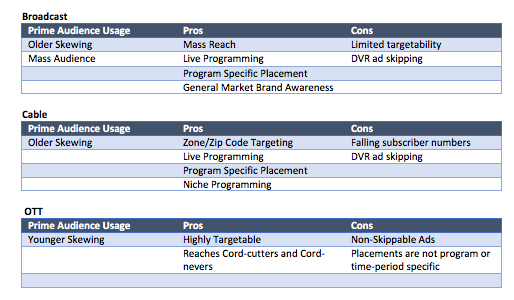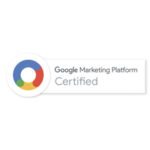Whoever says broadcast television isn’t what it used to be in the advertising world is absolutely right. Today’s television and video landscape has evolved from simply mass media to hyper targeted multi-device individualized user content that is consumed everywhere at any time.
That’s great news for advertisers!
To tap into those ever-expanding opportunities, the broadcast specialists at EXL Media who have been immersed in this evolution since it began, are consistently integrating ad-supported video-on-demand. It’s a critical strategy when you consider the rise of consumer cord-cutters and cord-nevers, especially in the Millennial and Gen Z demographics.
Let’s take a look at some current data to better understand this evolving media channel.
Naming Conventions: OTT vs. CTV
The Interactive Advertising Bureau’s conventions on usage define OTT and CTV as:

According to the May 2020 Comscore OTT Intelligence Data the “Big 5”: Netflix, YouTube, Hulu, Prime Video and Disney+, OTT providers make up 82% of all OTT viewing, the majority of which is not ad supported. While much of OTT viewing is done via subscriber video on demand content (SVOD), ad supported or AVOD viewing is on the rise with platforms such as Hulu, Pluto and Peacock offering free ad supported viewing options.

So, what does that mean for advertisers?
Video and broadcast consumption continues to fragment. Using Nielsen ratings data and Scarborough research, EXL Media broadcast strategists analyze each geographic market to find the best mix of video and linear TV placements to deliver your message to the desired targeted audiences.
Depending on the campaign parameters (goals, market, demographic, and budget) strategic buying and placement can be a combination of traditional broadcast, cable television and/or OTT. That’s why when developing media campaigns, EXL specialists consider the pros and cons of each component to develop the best overall delivery for each client’s specific needs.
For instance:
Broadcast Television
Sight, sound and motion…television is a foundational reach media and still the go-to source for developing brand awareness with mass market reach.
Cable Television
Cable television was the first wave in video fragmentation. Though providing many of the same benefits of broadcast, cable allows for greater geographic targeting through zoned zip code placements. Meanwhile, the fragmentation of networks also allows for more targeted placements by age, gender and/or lifestyle.
OTT
Over-the-Top is often an effective supplemental buy to broadcast and cable television, providing precision targeting, pricing flexibility and end user measurement.

As experienced and strategic buyers, EXL Media specialists look at all three television components as part of a collective whole, working with each piece to find the right mix for each advertiser. Afterall, consumers don’t typically think about the way they are viewing—they simply know what they want to watch and pull it up on whichever device(s) are handy.
Looking forward, television is no longer a clear-cut, one-size-fits-all medium. The fragmentation of broadcast and video viewing has presented more opportunities to advertisers who have not considered the medium previously due to cost or targetability. With the growth of OTT, advertisers can utilize television placements at a smaller geographic footprint, while targeting their core audience based on age, gender, income and lifestyle.
To learn more or for a complimentary consultation with an EXL Media buying specialist, contact Lisa Baggio, Broadcast Media Strategist at lisa@exlmedia.com.
















